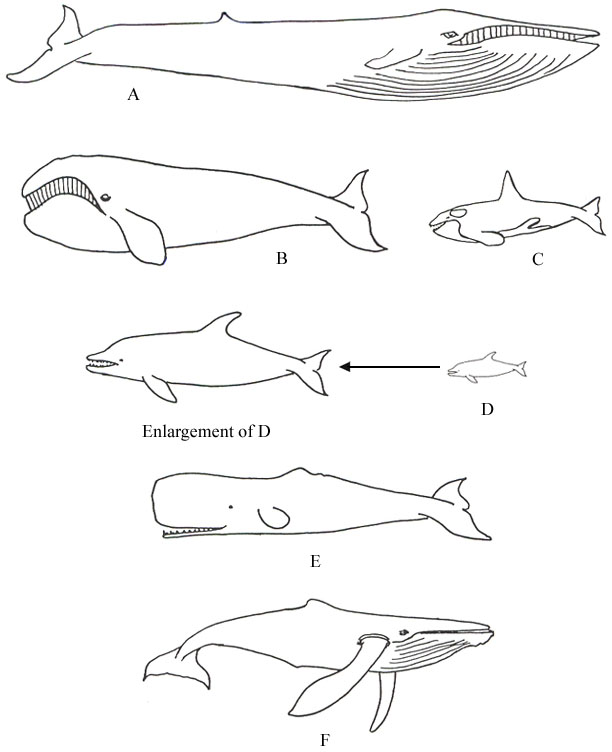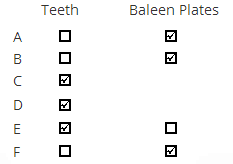Whales and dolphins
This task is about using a classification key to classify animals.
The whales and dolphins drawn below have been drawn to scale, that is 1 cm = 2 m. Note that animal D has been enlarged as well.

Which group are they in?
| a) |
Look carefully at the pictures of whales and dolphins and tick the boxes to show which have teeth and which have baleen plates. Get your teacher to check your groups before you answer part b).
|
||||||||||||||||||||||||||||
|
|
b)
|
Next divide each of the groups from a) into the smaller groups i) to iv) in the key below.
On the key fill in the boxes with the letter of the whale or dolphin that matches.
|
||||||||||||||||||||
|
Key to some whales and dolphins
 |
|||||||||||||||||||||
| c) |
Tick the box(es) to show which larger group(s) whales and dolphins belong to.
|
||||||||||||||||||||
|



